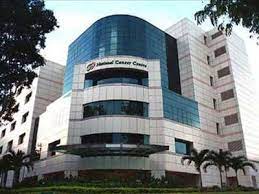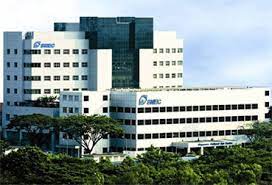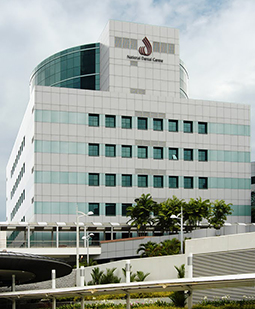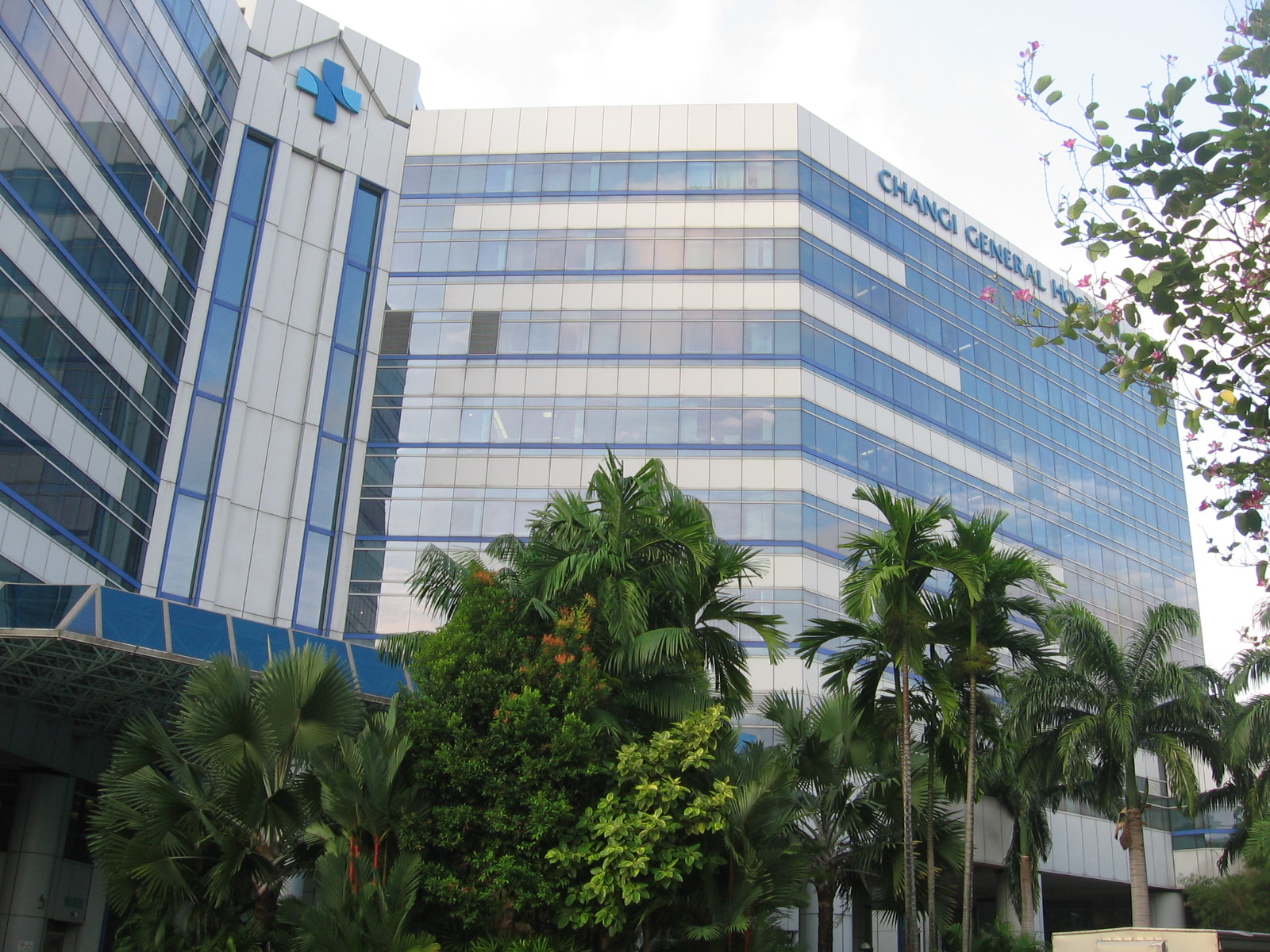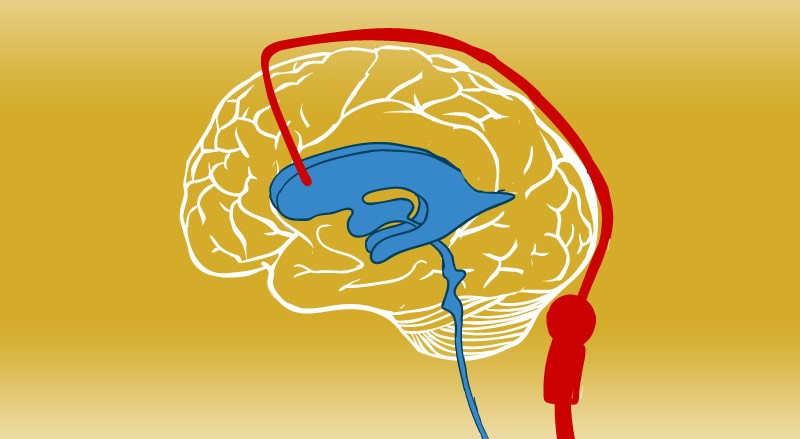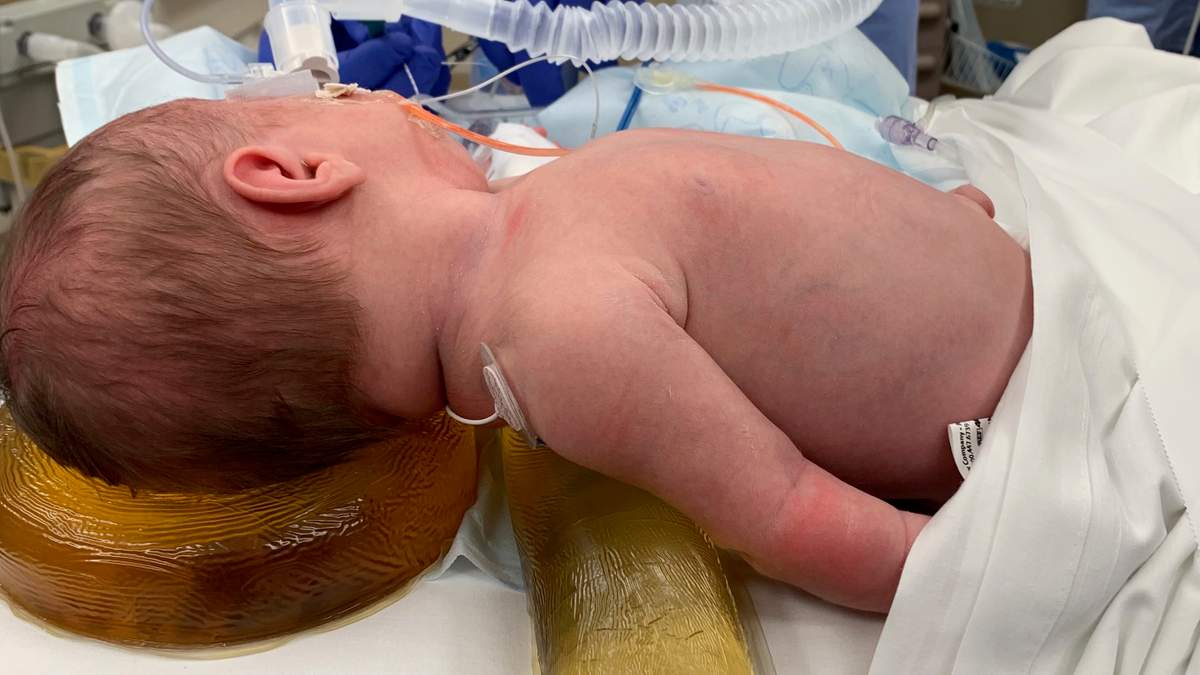VP Shunt cost in Singapore
VP Shunt
Ventriculoperitoneal shunting is a procedure that removes excess cerebrospinal fluid (CSF) from the brain's cavities (ventricles) (hydrocephalus). This operation is performed under general anaesthesia in the operating room. To drain excess cerebrospinal fluid, a tube (catheter) is delivered from the cavities of the head to the abdomen (CSF).
Disease Overview:
Hydrocephalus
The collection of fluid in the cavities (ventricles) deep within the brain is known as hydrocephalus. The extra fluid expands the ventricles, which exerts pressure on the brain.
The brain and spinal column are generally bathed in cerebrospinal fluid, which circulates via the ventricles. However, excessive cerebrospinal fluid pressure, which is linked with hydrocephalus, can damage brain tissues and cause a variety of brain function disorders.
Hydrocephalus may strike anybody at any age, however it is more common in newborns and individuals aged 60 and up. Hydrocephalus can be treated surgically to restore and maintain normal cerebrospinal fluid levels in the brain. Managing symptoms or issues caused by hydrocephalus frequently necessitates a variety of treatments.
Disease Signs and Symptoms:
The signs and symptoms of hydrocephalus differ depending on the age at which it first appears.
Infants
In babies, common indications and symptoms of hydrocephalus include:
- Alterations in the brain
- A bulging or tight soft patch (fontanel) on the top of the skull An exceptionally enormous head A fast growth in the size of the head
Symptoms and physical indicators
- Vomiting and nausea
- Sluggishness or sleepiness (lethargy)
- Irritability
- Unhealthy eating habits
- Seizures
- Downward-looking eyes (sunsetting of the eyes)
- Muscle tone and strength problems
Children of all ages, including toddlers and older children
Signs and symptoms in toddlers and older children may include:
Symptoms and physical indicators
- Headache
- Double eyesight or hazy vision
- Eye motions that are abnormal
- Sleepiness or sluggishness Sleepiness or sluggishness in a toddler
- Vomiting or nausea
- Unstable equilibrium
- Coordination issues
- Appetite problems
- Bladder control problems or frequent urination
- Changes in behaviour and cognition
- Irritability
- Personality shifts
- School performance is deteriorating.
- Delays or difficulties with previously learned tasks like walking or talking
Adults in their twenties and thirties
The following are common indications and symptoms in this age group:
- Headache
- Sluggishness
- Coordination or balance problems
- Urinary incontinence or a frequent need to urinate
- Problems with vision
- Memory, focus, and other cognitive abilities decline, which may have an impact on work performance.
Adults in their latter years
The following are the most prevalent indications and symptoms of hydrocephalus in individuals aged 60 and up:
- Urinary incontinence or a frequent need to urinate
- Loss of memory
- Other thinking or reasoning skills are gradually deteriorating.
- Difficulty walking, which is typically characterised as a shuffling stride or a stuck feeling in the feet.
- Coordination or balance issues
Disease Causes:
An imbalance between the amount of cerebrospinal fluid generated and the amount absorbed into the circulation causes hydrocephalus.
Cerebrospinal fluid is generated by the tissues that line the brain's ventricles. It travels through interconnected channels in the ventricles. The fluid ultimately finds its way into regions around the brain and spine. Blood arteries in tissues on the surface of the brain absorb the majority of it.
Cerebrospinal fluid is vital for brain function because it:
- Allowing the comparatively hefty brain to float within the skull by keeping it buoyant.
- To protect the brain from harm, it is cushioned.
- Getting rid of waste materials produced by the brain's metabolism
- Flowing back and forth between the brain cavity and the spinal column to maintain a constant pressure within the brain — compensating for fluctuations in brain blood pressure.
One of the following causes too much cerebrospinal fluid in the ventricles:
Obstruction. A partial obstruction of the flow of cerebrospinal fluid, either from one ventricle to another or from the ventricles to other regions around the brain, is the most prevalent condition.
Absorption is poor. A issue in absorbing cerebrospinal fluid is less prevalent. This is frequently linked to inflammation of brain structures as a result of illness or injury.
Overproduction. Cerebrospinal fluid is occasionally produced faster than it can be absorbed.
Disease Diagnosis:
The following factors are commonly used to make a diagnosis of hydrocephalus:
- Your responses to the doctor's signs and symptoms questions
- A complete physical examination
- An examination of the nervous system
- Tests of the brain
- Examination of the nervous system
The sort of neurological exam a person receives is determined on their age. In the office, the neurologist may ask questions and do basic tests to assess muscle condition, mobility, well-being, and the functioning of the senses.
Imaging of the brain
The following imaging studies can aid in the diagnosis of hydrocephalus and the identification of the underlying causes of the symptoms:
Ultrasound. Because it is a reasonably easy and low-risk technique, this test is frequently used for an initial screening of neonates. The ultrasound equipment is positioned over a soft region on the top of a baby's head called the fontanel.
During standard prenatal checkups, ultrasound may diagnose hydrocephalus before delivery.
MRI. This technique creates comprehensive pictures of the brain using radio waves and a magnetic field. Although this test is harmless, it is loud and demands that you lie motionless.
Excess cerebrospinal fluid can create enlarged ventricles, which can be seen on MRI images. They can also be utilised to figure out what's causing the hydrocephalus or what's causing the symptoms.
Some MRI scans may need minor anaesthesia in children. Some facilities, on the other hand, employ a quick variant of MRI that doesn't require sedation.
CT scan is a type of x-ray. Cross-sectional pictures of the brain are obtained using this specialist X-ray technique. Scanning is rapid and painless. However, because this test necessitates laying motionless, a youngster is frequently given a light sedative.
CT scanning gives less detailed pictures than MRI and involves a tiny level of radiation exposure. CT scans for hydrocephalus are typically reserved for urgent situations.
Disease Treatment:
Hydrocephalus can be treated with one of two surgical procedures.
Shunt
The surgical implantation of a drainage system, known as a shunt, is the most frequent therapy for hydrocephalus. It's made up of a long, flexible tube with a valve that maintains brain fluid flowing in the appropriate direction and at the right pace.
The tube is normally inserted into one of the brain's ventricles on one end. The tube is then tunnelled through the skin to a different portion of the body, such as the belly or a heart chamber, where the extra fluid may be absorbed more easily.
Hydrocephalus patients typically require a shunt system for the remainder of their lives. They must be monitored on a regular basis.
Third ventriculostomy (endoscopic)
For certain patients, endoscopic third ventriculostomy is a surgical technique that can be used. The surgeon examines the interior of the brain using a tiny video camera. To let cerebrospinal fluid to drain out of the brain, your surgeon cuts a hole in the bottom of one of the ventricles or between the ventricles.
Surgical complications
Both surgical treatments have the potential to cause problems. Because of mechanical issues, blockages, or infections, shunt systems can stop draining cerebrospinal fluid or regulate drainage poorly. Ventriculostomy complications include bleeding and infections.
Any failure needs immediate treatment, surgical modifications, or other measures. A fever or return of the previous hydrocephalus symptoms should necessitate a visit to your doctor.
Country wise cost comparison for VP Shunt:
| Country | Cost |
|---|---|
| India | $3510 |
| Thailand | $13145 |
| United Arab Emirates | $10295 |
| Singapore | $44020 |
Treatment and Cost
21
Total Days
In Country
- 4 Day in Hospital
- 2 No. Travelers
- 17 Days Outside Hospital
Treatment cost starts from
$0
Popular Hospital & Clinic
Featured Hospital
28 Hospitals
Types of VP Shunt in Mount Elizabeth Hospital, Singapore and its associated cost
| Treatment Option | Approximate Cost Range (USD) |
|---|---|
| No Treatment option added | |
- Address: Mount Elizabeth Hospital, Singapore
- Facilities related to Mount Elizabeth Hospital, Singapore:
9
DOCTORS IN 9 SPECIALITIES
20+
FACILITIES & AMENITIES
Types of VP Shunt in National University Hospital, Singapore and its associated cost
| Treatment Option | Approximate Cost Range (USD) |
|---|---|
| No Treatment option added | |
- Address: 5 Lower Kent Ridge Road Singapore 119074
- Facilities related to National University Hospital, Singapore:
9
DOCTORS IN 9 SPECIALITIES
20+
FACILITIES & AMENITIES
Types of VP Shunt in Raffles Hospital, Singapore and its associated cost
| Treatment Option | Approximate Cost Range (USD) |
|---|---|
| No Treatment option added | |
- Address: Raffles Hospital 585 North Bridge Road Singapore 188770
- Facilities related to Raffles Hospital, Singapore:
6
DOCTORS IN 9 SPECIALITIES
20+
FACILITIES & AMENITIES
Types of VP Shunt in National Cancer Centre, Singapore and its associated cost
| Treatment Option | Approximate Cost Range (USD) |
|---|---|
| No Treatment option added | |
- Address: 11 Hospital Crescent, Singapore 169610
- Facilities related to National Cancer Centre, Singapore:
7
DOCTORS IN 9 SPECIALITIES
20+
FACILITIES & AMENITIES
Types of VP Shunt in National Heart Centre Singapore and its associated cost
| Treatment Option | Approximate Cost Range (USD) |
|---|---|
| No Treatment option added | |
- Address: 5 Hospital Drive, Singapore 169609
- Facilities related to National Heart Centre Singapore:
10
DOCTORS IN 9 SPECIALITIES
20+
FACILITIES & AMENITIES
Types of VP Shunt in Singapore National Eye Centre, Singapore and its associated cost
| Treatment Option | Approximate Cost Range (USD) |
|---|---|
| No Treatment option added | |
- Address: 11 Third Hospital Ave, Singapore 168751
- Facilities related to Singapore National Eye Centre, Singapore:
7
DOCTORS IN 9 SPECIALITIES
20+
FACILITIES & AMENITIES
Types of VP Shunt in National Dental Centre, Singapore and its associated cost
| Treatment Option | Approximate Cost Range (USD) |
|---|---|
| No Treatment option added | |
- Address: 5 Second Hospital Avenue, Singapore 168938
- Facilities related to National Dental Centre, Singapore:
6
DOCTORS IN 9 SPECIALITIES
20+
FACILITIES & AMENITIES
Types of VP Shunt in Singapore General Hospital, Singapore and its associated cost
| Treatment Option | Approximate Cost Range (USD) |
|---|---|
| No Treatment option added | |
- Address: Singapore General Hospital, Outram Road, Singapore 169608
- Facilities related to Singapore General Hospital, Singapore:
7
DOCTORS IN 9 SPECIALITIES
20+
FACILITIES & AMENITIES
Types of VP Shunt in Changi General Hospital, Singapore and its associated cost
| Treatment Option | Approximate Cost Range (USD) |
|---|---|
| No Treatment option added | |
- Address: Changi General Hospital, 2 Simei Street 3, Singapore 529889
- Facilities related to Changi General Hospital, Singapore:
8
DOCTORS IN 9 SPECIALITIES
20+
FACILITIES & AMENITIES
Related Packages
More Related Information
Some of the top rated doctors are:
- Saudi Arabia
Some of the top rated hospitals are:
- India
- Fortis Memorial Research Institute
- BLK-Max Super Speciality Hospital
- Medanta-The Medicity, Gurgaon
- Indraprastha Apollo Hospitals, New Delhi
- Artemis Hospitals
- Manipal Hospitals
- Nanavati Max Super Speciality Hospital, Mumbai
- Kokilaben Dhirubhai Ambani Hospital, Mumbai
- KIMS Hospital Kondapur, Hyderabad
- MIOT International, Chennai
- MGM Healthcare, Chennai
- United Arab Emirates
- Burjeel Hospital, Abu Dhabi
- New Hope IVF Gynaecology & Fertility Hospital, Sharjah
- Iranian Hospital, Dubai
- Kings College Hospital Dubai
- Zulekha Hospital Sharjah
- Burjeel Hospital for Advanced Surgery Dubai
- Burjeel Medical City, Abu Dhabi
- NMC Royal Hospital, Khalifa City, Abu Dhabi
- NMC Royal Hospital Sharjah
- AL NOOR HOSPITAL, Abu Dhabi
- Al Zahra hospital, Dubai
- NMC Specialty Hospital, Al Nahda, Dubai
- Singapore
- Mount Elizabeth Hospital, Singapore
- National University Hospital, Singapore
- Singapore General Hospital, Singapore
- Changi General Hospital, Singapore
- Gleneagles Hospital, Singapore
- Johns Hopkins Singapore International Medical Centre, Singapore
- Thomson Medical Centre, Singapore
- Mount Alvernia Hospital, Singapore
- Novena Medical Centre, Singapore
- Alexandra Hospital, Singapore
- Saudi Arabia
Frequently Asked Questions
Numerous hospitals in Singapore provide VP Shunt services. The following hospitals in Singapore are among the best for VP Shunt:
Mount Elizabeth Novena Hospital
Mount Elizabeth Hospital
Gleneagles Hospital
Farrer Park Hospital
Parkway East Hospital
After VP Shunt, the patient is expected to stay in the hospital for around 4 days in order to get treatment and monitoring. To ensure that everything is in order and the patient's recuperation is proceeding as planned, the patient undergoes multiple biochemical and radiological exams. Discharge is scheduled once clinical stability has been confirmed.
Singapore's VP Shunt hospitals have an average rating of 2.7. The grade takes into account a number of factors, including the hospital's infrastructure, pricing strategy, service quality, staff civility, etc.
Renowned medical professionals in Singapore that specialize in VP Shunts include:
Dr. Goh Yu Ching Keith
Dr. Lee Kim En
Dr. Lee Kam Yiu Timothy
Dr. Hong Alvin
Dr. Lee Kheng Hin
Dr. Khoo Chee Min James
The price of a VP Shunt in Singapore could vary depending on the hospital. The best hospitals in Singapore for VP Shunt pay for all of the costs associated with the candidate's pre-surgery investigations. The cost of anesthesia, medications, hospital stays, and the surgeon's fee are all included in the price of a VP Shunt in Singapore. The cost of VP Shunt in Singapore may go up if there are difficulties following surgery, a new diagnosis, or an extended hospital stay brought on by a delayed recovery.
The patient may be responsible for certain costs that go beyond the cost of the VP Shunt. These are the daily meal plans and lodging arrangements outside of the hospital. In Singapore, daily additional costs per person amount to roughly USD 50.





